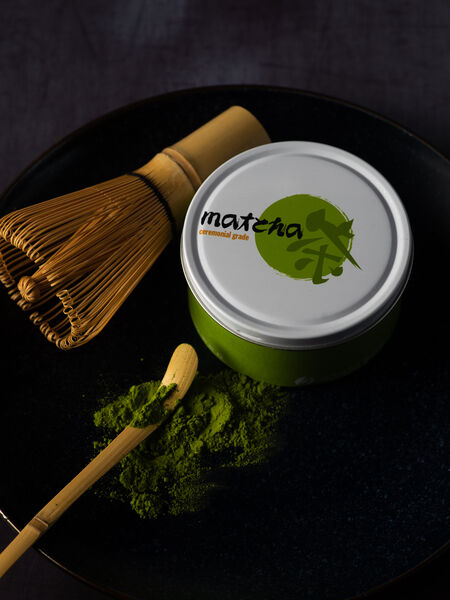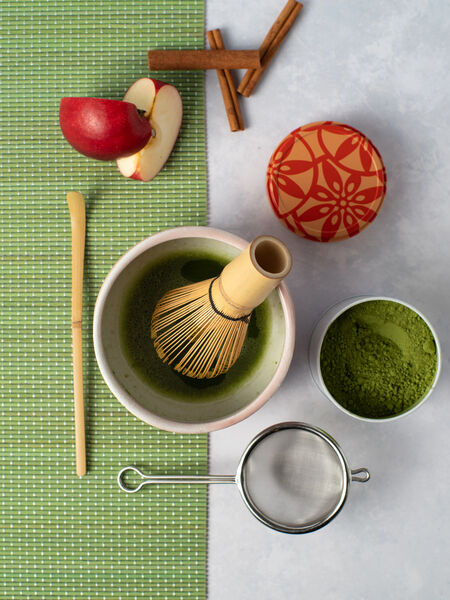Chasen 101: The Essential Matcha Whisk Guide


What is a Chasen?
The Chasen (Matcha Whisk) is a delicate tea preparation tool made completely from bamboo and mainly used for the preparation of matcha. It is used to aerate your matcha and help to create a smooth, creamy and frothy drink.
How They're Made
Chasens are produced using one piece of bamboo and creating them is a long process that is usually taken on by one person completely by hand. Each tine of the Chasen is carved separately, with most Chasens having around 100-120. There are, however, many styles out there with varying numbers. The Chasens with less tines (60-80) are the best ones to use to create koicha and the ones that have 100+ tines are best for usucha because there is a higher surface area of the whisk that touches the matcha, allowing it to aerate easier.
While they do vary in design depending on use, the average Chasen whisk length is usually 10.5 cm and the head diameter is usually 6 cm, with each tine measuring 0.1mm in circumference. It is possible to use other tools to whisk your matcha, however you will not get better results than the ones you get with a Chasen. Also, many other tools that are available are made out of manmade materials like plastic, resin or metal, all of which will have an effect on the taste of your matcha, so by choosing them you are hindering your overall experience.
Why It's Great
The Chasen is a completely silent tool and the sound of the bamboo moving briskly through the matcha and softly touching the side of the bowl can be incredibly relaxing, especially because most people enjoy their matcha first thing in the morning. Learning how to properly clean and care for your Chasen allows you to learn some of the most key elements of the traditional tea ceremony, as many parts of that revolve around purifying and cleaning the teaware used. This represents a key part of the tea ceremony, purity. It enables you to learn and is a fantastic way to embrace the key aspects of tea ceremony outside of the more formal environment.
How To Use for Best Results
You should always soak your Chasen before use, you can do so simply using a glass of warm water. Using a glass rather than your Chawan (Matcha Bowl) makes sure that all tines are covered; you’ll want to leave it to soak for around a minute in total, this makes sure that the tines of the Chasens are malleable rather than hard and brittle, meaning they are less likely to snap and break during whisking.
How To Clean and Maintain Your Chasen
As soon as you can after whisking your matcha, rinse all of the matcha off of your whisk using only warm water. Avoid the use of soap entirely because the bamboo will retain the taste and aroma of dish soap and you don’t want either of those in your bowl of matcha. Simply rinse it in a glass, in your Chawan or under the warm water tap. Ensure that all the matcha has been removed by using a toothbrush to get into between the tines and into those hard to reach places. Remember to avoid being heavy handed while cleaning, because the tines are delicate and you will break them should you apply too much pressure.
Make sure that you place it onto a Kuse-naoshi (whisk stand/whisk shaper) until it is completely dry. We recommend doing this as placing it upside down before it is completely dry can cause water to run into the handle area and can result in lasting damp and eventually mold forming on the Chasen. Not only will letting your whisk dry on a Kuse-naoshi avoid this, but it will also help your Chasen to hold its shape for longer.
After you have used your Chasen for the first time and cleaned it, do not store it in its original container again, especially if that container happens to be made out of plastic. Bamboo is a natural material and is therefore likely to retain moisture and can be susceptible to molding, so to avoid that happening it is best to let your Chasen air dry in a mild environment, void of strong aromas that it may end up retaining. Bamboo is also prone to expanding and contracting during changes in humidity and the climate of the area it is stored in. As a result, you may notice cracks start to form in the handle of your Chasen, initially you need not worry and you can still continue to use it, however as it gets worse it may get uncomfortable to hold. You should consider replacing your Chasen when that occurs but otherwise you should only replace it when the tips of the tines have started to break off and become dull.
While it might seem like a lot of work, it is more than worth putting the time and effort into taking care of your Chasen to ensure that it will last a long time and provide you with the most luxuriously frothy bowls of matcha each and every time you use it.
